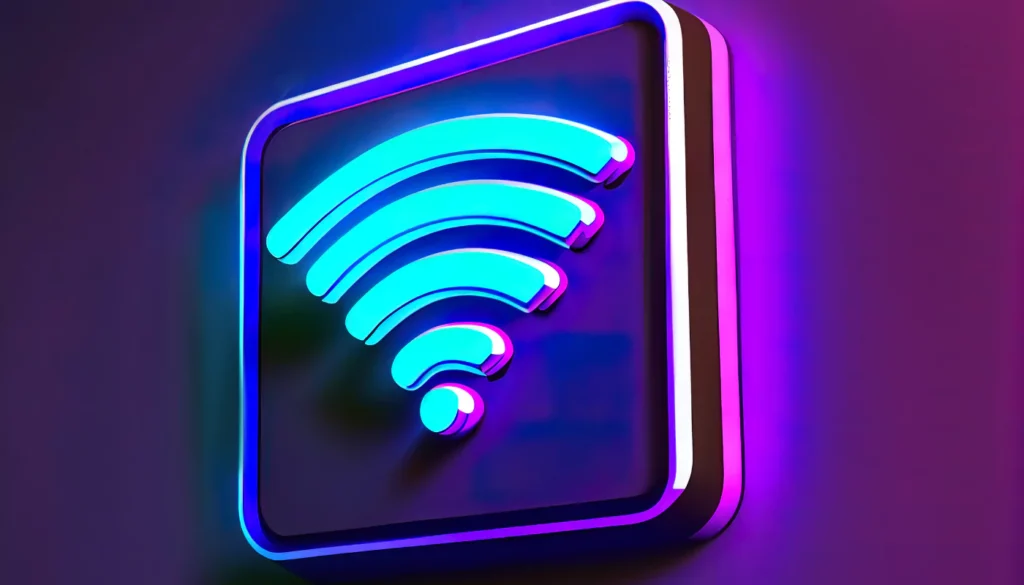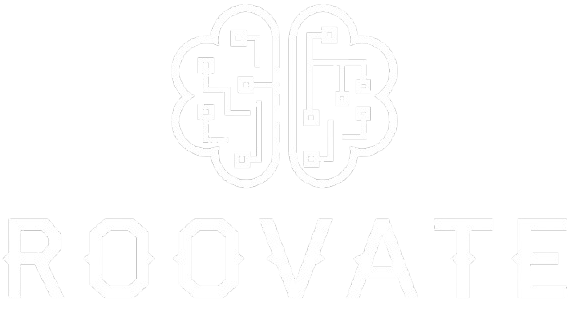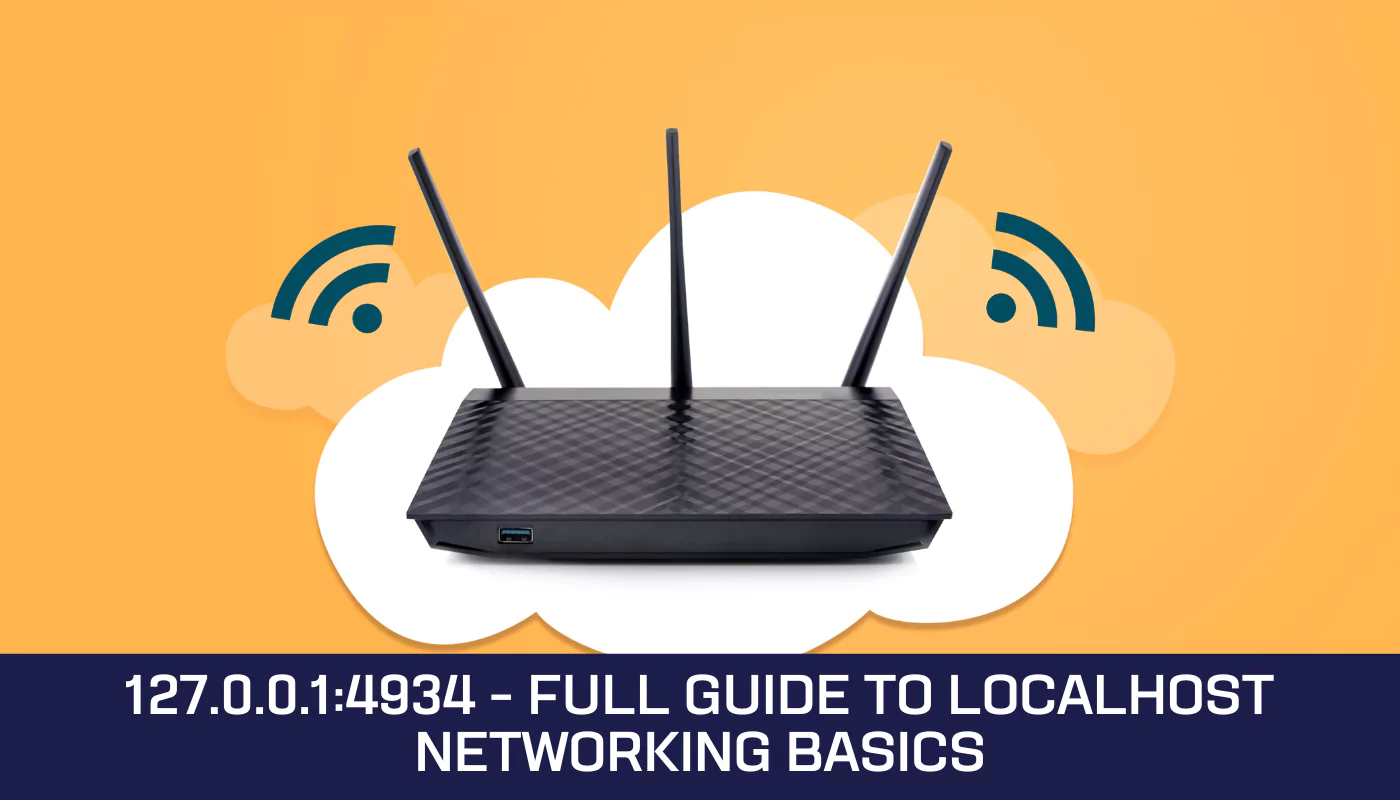Having trouble with computer networking? “127.0.0.1:4934” might be a term you’ve heard. This guide will show how to use this IP address and port for localhost networking. Keep reading for easy steps on making it work!
Key Takeaways
- 127.0.0.1 is a loopback address used by computers to talk to themselves without using the internet.
- Port 4934 can be used for testing and debugging applications right on your device, avoiding network delays.
- To use 127.0.0.1:4934, type it in your web browser or app settings, making sure port 4934 is open and not blocked by firewalls.
- Risks of using localhost include unauthorized access and high resource consumption, so secure connections are important.
- Always update software and check for conflicts or vulnerabilities when working with localhost networking at port 4934.
Understanding 127. 0. 0

127.0.0.1 is a special address for your computer. It helps your machine talk to itself without going out to the internet.
What is 127.0.0.1?
127.0.0.1 is an IP address that routes traffic back to your own device. This address is known as the loopback address, and it helps your computer talk to itself. Many people call it “localhost.” It serves as a domain name for this loopback address.
Applications use 127.0.0.1 to test and debug their functions without going online. When a program sends data to 127.0.0.1, it means the message stays on the local machine only. Port 4934 is one of the many ports that can be used with this address for different purposes.
There is no place like 127.0.0.1.
The Loopback Address
The loopback address is a special type of IP address. It is used by computers to send data back to themselves. The main loopback address is 127.0.0.1, also known as localhost. This means that any request sent to this address does not leave the computer.
Using the loopback address allows programs on your computer to talk to each other without going through an outside network. This setup is great for testing and debugging programs while they are running on the same machine.
Developers often use 127.0.0.1 for system functionality checks or local server setups, ensuring everything runs smoothly before going live on the internet.
Why Use 127.0.0.1?
Localhost, or 127.0.0.1, is useful for many reasons. It gives your computer a way to connect back to itself. This loopback address is often used for testing and debugging software.
Developers can run server programs on their devices without needing external connections.
Port 4934 is one option available for such connections. Common uses include running applications that need to send data within the same computer. Using this setup allows quick checks of network functions without affecting outside systems or networks.
How to Use 127. 0. 0

To use 127.0.0.1:4934, you can open your web browser and type the address in the search bar. This action connects you to services running on your computer at port 4934 for testing or development.
What is Port 4934 Used For?
Port 4934 is one of many ports that can be used for different tasks. It often helps with server programs running on your own computer. When you use the address 127.0.0.1:4934, it allows programs to send and receive messages quickly within your device.
This port can play a role in testing and debugging applications too. By using this setup, developers can check if their software works as expected without needing an outside connection.
Port 4934 provides a simple way to connect directly back to your machine’s localhost networking basics while avoiding network delays or issues.
Common Uses for 127.0.0.1:4934
The address 127.0.0.1:4934 serves many purposes in local networking. It connects programs running on your computer to test and debug smoothly.
- Server Testing: Developers often use 127.0.0.1 for testing server applications on their own devices. Port 4934 can host different services without needing an internet connection.
- Debugging Tools: Many debugging tools connect to localhost at port 4934. This helps find and fix issues quickly while developing software.
- Database Connections: Some database management systems use 127.0.0.1:4934 to connect locally for testing queries and commands.
- Web Development: Web developers run test servers on localhost, allowing them to see changes in real-time without publishing them online.
- Application Communication: Programs on the same device often communicate through this loopback address using port 4934, enhancing speed and reliability.
- Testing Security Configurations: IT professionals use 127.0.0.1:4934 to test firewalls and security measures without exposing vulnerabilities over the network.
- Running Services Locally: Various applications can act as servers on port 4934, enabling users to access services like websites or APIs from their own machine.
- Simulating Network Environments: Developers simulate complex networking scenarios using localhost addresses like 127.0.0.1, creating a safe space for experiments.
- Accessing Local Resources: Users utilize this address to access resources such as files or data stored locally without involving external networks.
- Education and Training: Students learning networking concepts often practice with localhost, as it provides a risk-free environment for hands-on experience with TCP/IP protocols and configurations.
Troubleshooting Issues with 127.0.0.1:4934
Issues can arise when using 127.0.0.1:4934 for localhost networking. Troubleshooting these problems is important for smooth operations.
- Check your application settings. Ensure the app is set to listen on port 4934. This step can help you avoid connection errors.
- Verify firewall settings. Firewalls may block connections to local ports. Make sure that port 4934 is allowed in your firewall rules.
- Test your network connection. Ensure your TCP/IP settings are correct and that you are connected to the right network. Issues with connectivity can affect access to 127.0.0.1:4934.
- Look for other applications using the same port number. Conflicts may occur if another process uses port 4934. Use a tool like netstat to check for open ports.
- Restart your local server or application if it hangs or does not respond as expected. Sometimes, simply refreshing the program can resolve issues quickly.
- Monitor resource consumption on your machine when accessing 127.0.0.1:4934 often helps identify performance problems caused by high usage of CPU or memory from running apps.
- Enable logging in your application for more detailed error messages related to localhost connections, especially those involving 127.0.0.1:4934.
- Update your software regularly, as older versions may have bugs affecting localhost functionality, including services tied to this IP and port combination.
These steps will help troubleshoot issues with 127.0.0.1:4934 in your local networking tasks.
Potential Risks and Security Concerns with 127. 0. 0

Using 127.0.0.1:4934 can lead to risks like unauthorized access and security problems, so it’s good to stay cautious about how you use it. Read on to learn more about these concerns!
Unauthorized Access
Unauthorized access can be a big risk when using 127.0.0.1:4934. This IP address lets programs talk to each other on your computer without going out to the internet. If someone gets into your system, they might use this connection for their own benefit.
They could send commands or steal data by reaching the loopback address.
Many applications rely on this setup for testing and debugging purposes. If these apps are not secure, unauthorized users may exploit them easily. Keeping local connections safe is crucial because they can give unwanted guests a way into your network through vulnerabilities in localhost networking settings.
Resource Consumption
Resource consumption can be a concern with 127.0.0.1:4934 in localhost networking. Many programs run on this IP address, which is also known as “localhost.” Each program uses system resources like memory and CPU power.
If too many applications use 127.0.0.1 at the same time, it can slow down your computer.
Port 4934 is just one of thousands of ports available for different tasks. When multiple services compete for resources on this port or the loopback address, it may lead to issues like lag or crashes in apps you are running locally.
Always keep an eye on how much resource each application is using to ensure smooth operation while testing and debugging your system with localhost connections.
Security Vulnerabilities
Security vulnerabilities can occur with the use of 127.0.0.1:4934. This address allows programs to connect back to the same device. If someone gains access, they may exploit these connections for malicious purposes.
Ports like 4934 can have weaknesses that hackers target.
Using 127.0.0.1 may seem safe, but it is not foolproof. An open port could let unwanted users enter your system and consume resources quickly. Misconfigurations or proxies might expose your localhost to threats, leading to serious security problems if not managed well.
Port Conflicts
Security vulnerabilities can lead to port conflicts. A port conflict happens when two programs try to use the same port on 127.0.0.1:4934 at the same time. This can cause one or both programs to fail or behave strangely.
It is essential to manage which applications run on 127.0.0.1:4934.
Port 4934 is meant for communication between server programs and your device, but it must be free from other connections. If another program uses this port, you may face issues in system testing or troubleshooting incoming connections on localhost networking basics like TCP/IP functionality.
Keeping track of which services use specific ports helps avoid these problems with 127.0.0.1:4934.
Exposure Through Proxies or Misconfigurations
Port conflicts can lead to issues with localhost networking. Misconfigurations or poorly set up proxies may expose the address 127.0.0.1:4934 to outside threats. This can allow unauthorized access to your device through this loopback address, making it easier for attackers to reach your data.
A misconfigured proxy might direct traffic meant for local services out into the public network. This creates a security risk while also consuming resources on your device as it processes unnecessary data flows.
It’s crucial to check settings and ensure that 127.0.0.1 is properly secured from outside access and remains safe for testing and debugging purposes related to computer connectivity and TCP/IP functions.
Conclusion
Using 127.0.0.1:4934 is key for many tasks on your own computer. This address lets you test and debug programs easily. It also comes with some risks, so be aware of them. Secure your connections to keep your data safe.
With this guide, you can now use localhost networking like a pro!
FAQs
-
What is 127.0.0.1:4934 in the context of localhost networking basics?
The term “127.0.0.1:4934” refers to a specific IP address and port number on your own computer’s network, used for local testing and development.
-
How does IPv play into localhost networking functionality?
IPv, or Internet Protocol Version, is fundamental to networking functionality as it defines how data packets are addressed and routed across networks.
-
What role do TCP/IP, subnet mask, router, DNS server, and Ethernet play in localhost networking?
TCP/IP is the suite of protocols that governs communication on the internet while a subnet mask helps divide an IP network into smaller parts.
A router connects different networks together; a DNS server translates domain names to IP addresses; Ethernet provides wired connectivity for devices within a local area network. -
What can I learn from “Full Guide to Localhost Networking Basics”?
This guide will provide comprehensive knowledge about basic concepts like IPv, TCP/IP protocol suite – which includes understanding the function of routers and DNS servers – along with practical applications such as setting up your own local host at 127.0.0.1:4934 using ethernet connections.

